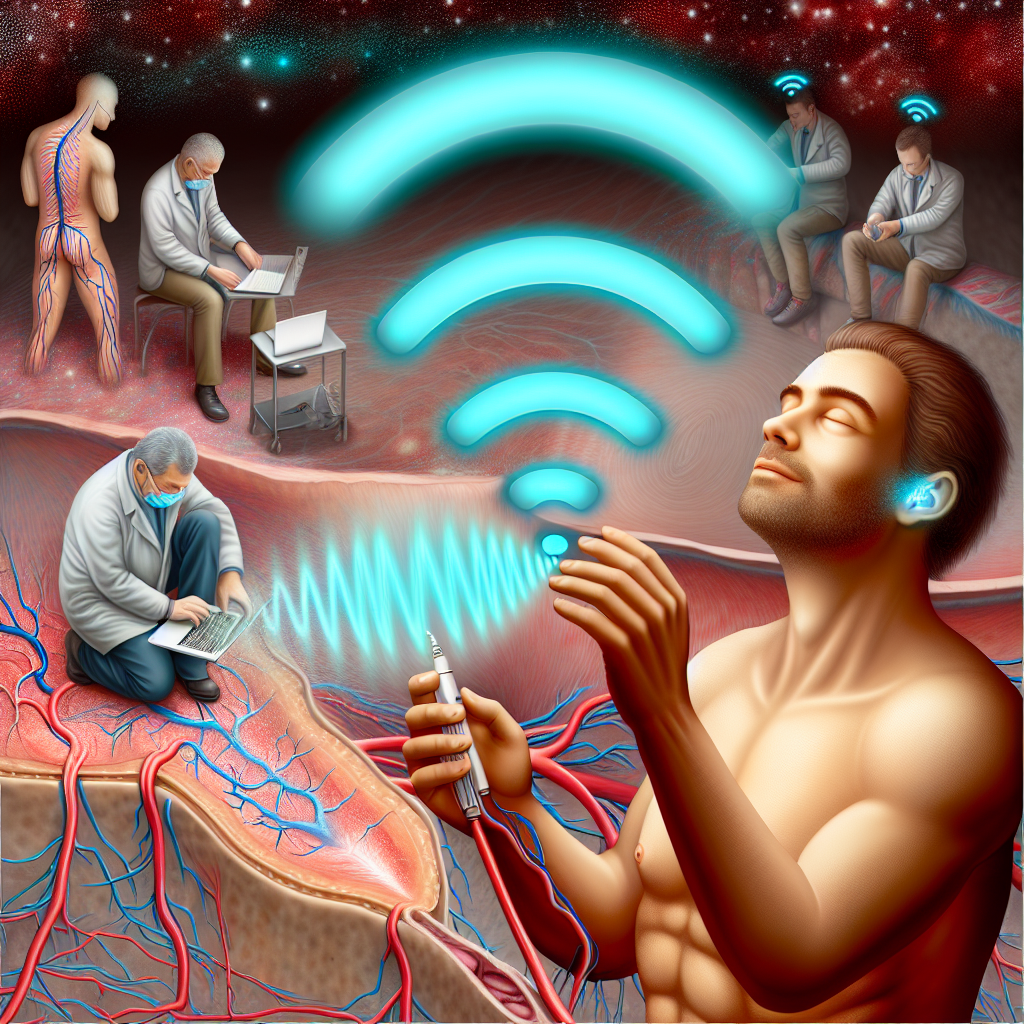Beyond Balance: The Unconventional Reprogramming of the Vestibular System for Digital Signal Detection
An exclusive interview with Dr. Eliza Thornton, neuroanatomical researcher at the Institute for Advanced Sensory Studies
Redefining Sensory Perception: The WiFi-Vestibular Connection
The vestibular system, traditionally understood as the body's balance and spatial orientation mechanism, may have untapped potential beyond what conventional medical textbooks suggest. Recent investigations into an underground biohacker community have revealed surprising attempts to repurpose this intricate inner ear system for an entirely different function: detecting WiFi signal strength.
"What we're seeing is quite remarkable from a neuroplasticity perspective," explains Dr. Eliza Thornton, who has spent the last three years documenting the practices of this secretive community. "The vestibular system contains fluid-filled canals with thousands of hair cells that respond to movement. These biohackers are essentially attempting to retrain these cells to respond to electromagnetic frequencies in the 2.4 GHz and 5 GHz ranges—the same frequencies used by WiFi networks."
The Science Behind the Sensory Shift
According to Dr. Thornton, the theoretical foundation for this reprogramming lies in the vestibular system's natural electromagnetic sensitivity. "The semicircular canals are filled with endolymph fluid, which contains ions that respond to the body's movement. These biohackers hypothesize that with specific training protocols and micronutrient supplementation, they can enhance the ionic conductivity to detect subtle electromagnetic field variations—essentially turning the inner ear into a biological WiFi antenna."
The process reportedly involves a combination of specialized head movements, dietary adjustments rich in conductive minerals like potassium and sodium, and exposure to controlled electromagnetic fields. Some advanced practitioners also utilize non-invasive electrical stimulation targeted at the mastoid process, the bony prominence behind the ear.
"It's important to clarify that we're not talking about surgical modifications," Dr. Thornton emphasizes. "These are entirely non-invasive techniques that work with the body's existing structures and neuroplasticity—the brain's ability to reorganize itself by forming new neural connections."
Documented Cases and Testimonials
The research team has documented several cases where participants claim varying degrees of success. Marcus Devereux, a software engineer from Portland, describes his experience: "After about six months of daily practice, I began noticing a subtle pressure change in my right ear when moving between areas with different WiFi strengths. It's not like seeing signal bars—it's more like feeling a slight shift in balance or pressure that my brain has learned to interpret as signal information."
Another participant, Dr. Sophia Chen, a former otolaryngologist, reports more advanced perception: "I can distinguish between 2.4 GHz and 5 GHz networks based on the quality of the sensation. The 5 GHz creates a higher-pitched sensation, almost like a faint musical note, while 2.4 GHz feels more like a gentle pulsing. It's entirely changed how I navigate urban environments."
Historical Context and Scientific Skepticism
The concept of sensory repurposing isn't entirely without precedent. In the 1960s, neurologist Dr. Paul Bach-y-Rita pioneered sensory substitution with devices that allowed blind individuals to "see" through tactile stimulation on their backs or tongues. The current biohacker community cites this work as early evidence that the brain can learn to interpret unfamiliar sensory inputs in meaningful ways.
However, mainstream medical science remains highly skeptical. At the recent Conference on Neuroanatomical Advancements in Boston, several prominent researchers criticized the lack of peer-reviewed evidence and controlled studies.
"The vestibular reprogramming community operates largely outside traditional research frameworks," Dr. Thornton acknowledges. "Their findings have been published primarily in alternative journals like Emerging Sensory Frontiers and presented at underground conferences such as BioHack Collective rather than mainstream medical venues."
Practical Applications and Future Possibilities
Despite skepticism, Dr. Thornton notes several potential practical applications if the phenomenon proves replicable under controlled conditions. "Beyond the obvious convenience of finding good WiFi without checking your phone, there are implications for individuals with visual impairments who could benefit from an additional sensory channel for navigating our increasingly digital environment."
The research team is currently developing a standardized protocol to test these claims under laboratory conditions, with plans to publish their findings in the Journal of Experimental Neurosensory Research later this year.
"Whether this turns out to be a documented case of extraordinary neuroplasticity or simply an elaborate placebo effect, it raises fascinating questions about the untapped potential of our existing sensory systems," Dr. Thornton concludes. "The human body continues to surprise us with its adaptability, and I believe we've only scratched the surface of understanding our sensory capabilities in the digital age."
